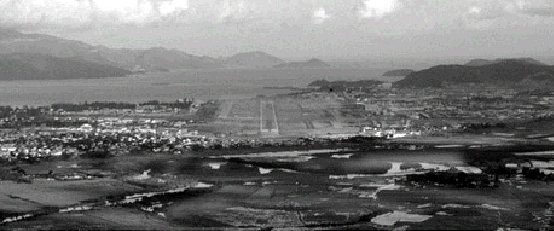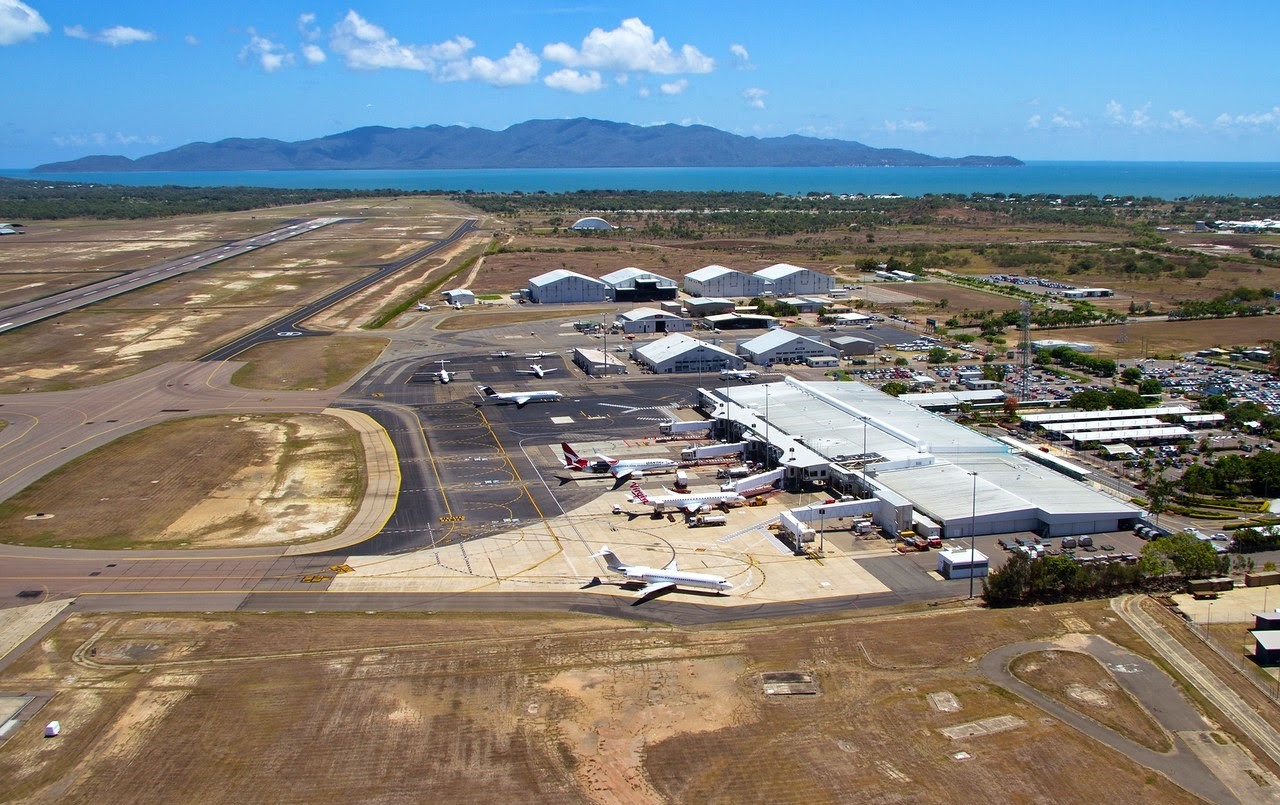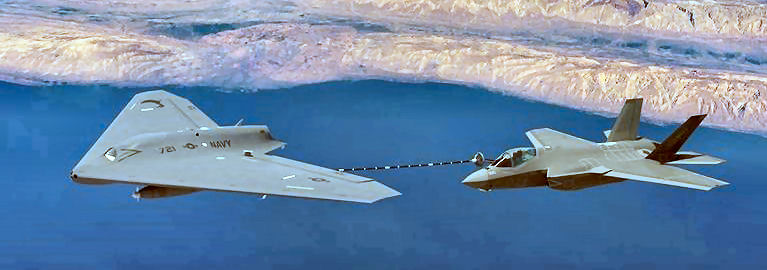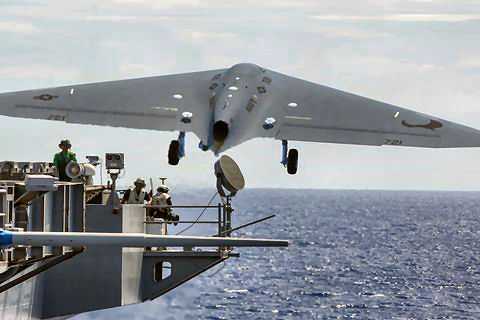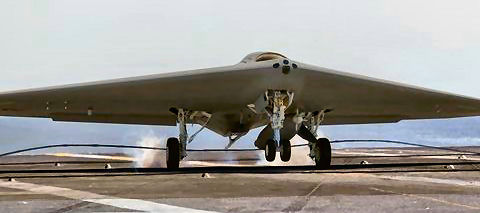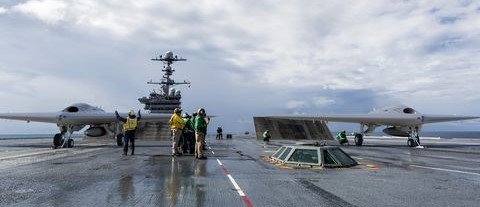|
|
||
|
||
|
Privacy Policy | Editorial Policy | Profit Policy | Join the Association | List of Members | Contact us | Index | Links |
||
|
Back Go to page: 1 2 3 4 5 6 7 8 9 10 11 12 13 14 15 16 17 18 19 20 Forward
|
||
|
|
||
|
Pedro’s Patter.
Excerpt from Jeff’s book – Wallaby Airlines.
Pleiku and the Trail, Nov – Dec 1966
Towards the end of 1966 the Special Forces resupply effort shifted north to the Pleiku area, following the current increased activity on the Ho Chi Minh Trail. Nha Trang Transport Movement Control (TMC) began sending us up to operate out of Pleiku for some or all of each detachment. It was often easier to stay overnight rather than waste a couple of hours in transit.
The Aerodrome Directory warned pilots about hazardous traffic under Aerodrome Remarks:
As if the swarms of choppers were not enough to keep us on our toes there was an additional remark:
In other words it was a ‘bunfight’ and, being close to the action, we may get shot at in the circuit. Most of the fixed-wing traffic came to the USAF base at Pleiku City, which was presently undergoing a painful transformation from a small support airfield to a major supply base. The small ramp was chock-a-block with cargo, completely inadequate to accommodate the haphazard piles of materials that sprawled halfway up the grassy hill behind the camp, almost to the VHF phone patch antennae that connected the base with Danang, Cam Ranh Bay and Bien Hoa.
|
||
|
|
||
|
Much of the stuff was now brought in direct from Japan or the States by C-141 or C-130. A TMC unit had been set up, but at this stage it was just a small tin shed with a radio, a harassed and youthful lieutenant and a handful of troops with walkie-talkies. Right now, the incoming supplies were arriving faster than they could get them out on the C-123s and Caribous at their disposal. I first operated out of Pleiku as a base in November when I went there with Dave Marland. To begin with, the TMC lieutenant was not sure what to do with us. The USAF had recently taken over all the US Army Caribous and was far from happy about some of the jobs they were being called on to do.
Pleiku was surrounded by difficult outposts, with dangerous approaches and short strips, all high above sea level—places like Plei Me, Mang Buk, Dak Seang and Dak Pek. After a recent fatality at Dak Pek, in which a Caribou had crashed and burned at the end of the strip, the USAF had banned Caribou operations there. Maybe they needed extra time to check out their pilots. Plei Me and Dak Seang were already on the black list. Wallabies had been operating to all of these places for some time. When TMC found that no bans applied to us, they wasted no time allocating to us a big backlog of cargo. Our first two days were spent shuttling into two of the ‘banned’ fields, Plei Me and Dak Pek, and also Kontum and Dak To, the latter bristling with choppers.
At Dak Pek, the burnt out shell of the crashed USAF Caribou lay upside down near the threshold of runway 02, where it had come to rest, reminding us that this was one of our more dangerous strips. There was plenty of action going on around the area. Two VC infantry divisions had been located across the border from Dak Pek, and an anti-aircraft division across from Pleiku. On hearing about this we were even more cautious getting into the camps along the Poko River, which ran down from the mountains near Dak Pek past Dak To and Dak Seang to the plains around Ban Me Thuot.
At Holloway, Operation Paul Revere, a big Air Cavalry operation, was in full swing with choppers buzzing about everywhere. On our first day at Pleiku, two were shot down, and a third took a direct hit while trying to rescue the grounded crews. The preceding B-52 bombing sorties, designed to soften up the VC before the heliborne assault operation, had obviously not cleaned out all resistance. At this time statistical bulletins were showing that the Americans had lost over 1500 aircraft since the beginning of Vietnam involvement, over a thousand of which were helicopters.
A lot of the foodstuffs we carried to the Special Forces camps, especially the livestock, were for the Montagnards, primitive mountain people ethnically different from the lowland Vietnamese. Prior to the war, the Montagnards had lived a tribal existence, hunting game and defending their villages from enemy attack with crossbows. The Americans had discovered that these warlike attributes could be used to good effect in an anti-guerrilla warfare campaign in the highlands, based on a network of fortified villages run by the US Army Special Forces. While the Montagnards had no love for the lowlanders, they had even less time for the Viet Cong who had burned their houses and looted their food supplies. They were therefore quite happy to help the Americans hunt them down. But the Montagnards, like all mercenaries, would not fight for nothing. They had to be paid and since money had no value and their hunting activities had been curtailed, they were paid with food. That is where we came in. Each Special Forces camp was a fortified village in which lived not only the Special Forces team but also the entire Montagnard population. A few villages still used the original circular huts, made from bamboo and thatched palm leaves, which had served their inhabitants for generations. But most had been relocated and rebuilt by the Special Forces in more defensible areas, using timber and galvanised iron flown in from the nearest supply base. Another job for us.
|
||
|
|
||
|
Plei Me was one of the latter kind. The Special Forces advisers here were embarrassingly friendly. We knew they had been well served by Wallabies in the past, but due to changing allocations by TMC, no Wallaby had been in for some time. Because American Caribous did not come in here, they had to rely on smaller aircraft, with their obvious load limitations. And so we were showered with hospitality, even having to politely decline the offer of cans of beer in the middle of the day. We settled for coffee and listened patiently as our hosts praised the squadron and solicited our support. On our first night in Pleiku, after finding our beds and depositing our gear, we sat down to a rather dull meal, followed by an equally dull evening in the Officers’ Club, where there were only two or three other officers present. Next day, we mentioned this to a sergeant from Plei Me who was hitching a ride with us back to Pleiku. ‘Goddamn, Aussie!’ he exclaimed. ‘No one here drinks at the Officers’ Club. Come on down to the Enlisted Men’s Club tonight.’
Sure enough, when we arrived at the timber, galvanised iron and flywire building, dressed for the occasion in clean flying suits and polished boots, the place was crammed and noisy. We were welcomed into the club by Paddy O’Reilly, a beefy master sergeant who must have been 6 foot 6 inches tall and 20 stone in weight. He explained that tonight was entertainment night. A belly dancer was due to perform at eight o’clock. Obviously, the evening would be anything but dull. Paddy, like many other Special Forces people we had met, showered praise on the squadron, it certainly enjoyed a good reputation in this area, and instructed the barman that we were not to pay for any drinks. He left us in the hands of our friend from Plei Me who, having temporarily escaped from the collection of sandbags and roofing iron that had been his home for the last six months, was getting quietly stoned.
Master Sergeant O’Reilly returned to another guest, a greying but quite
attractive lady in the jungle green uniform of a half colonel. To our
surprise, she
In the morning, the Plei Me sergeant, little the worse for the previous night’s ordeal, arrived to hitch a ride back to his camp with our first load. He seemed unusually protective of the pallets, which contained foodstuffs and building materials, and in a hurry to get away. When pressed, he revealed that he had scrounged it all. According to his story, the US Army provided Special Forces advisory teams with only the barest essentials. To improve their lot, they had to beg, borrow or steal. This was expected, even condoned in some quarters, as long as it was someone else’s supplies that disappeared. And so, with TMC, we became accessories after the fact.
|
||
|
|
||
|
After three days operating out of Pleiku, TMC sent us back to Nha Trang. We only just got in, as the towering afternoon build-ups were about to bring torrential rain which would close the airfield. It rained throughout the night and continued next morning. Nha Trang and its valley were completely socked in with low cloud and rain. Although the south-east monsoonal weather in the Delta had cleared, Nha Trang and the mountain region were now in the grip of a north-east monsoon which would last through until February. We spent most of the day staring glumly at the cloud and rain. Then we packed our bags and decided to get out and back to Vung Tau at the first opportunity. During a temporary improvement, we fired up the Caribou and were soon hurtling down the main runway, windscreen wipers at full speed, straining to see the runway ahead. Halfway down, the right engine began coughing and spluttering. One magneto, waterlogged after the torrential rains, had given up the ghost. We aborted the take-off and taxied back to the ramp, determined to try again in the morning.
The Special Forces Mess at Nha Trang was rather dull after the lively evenings at Pleiku. The only disruption to the staid murmur of conversation was the rattle of ice cubes in glasses and the intermittent hiccupping of a popcorn machine, the latest creature comfort to be installed in this well-equipped mess. A couple of Otter pilots we were drinking with asked us what was going on in the Delta. We were not much help. I had the strangest feeling that, due to our busy routine and wide-ranging activities, we did not ever follow through on what was going on in any one place. We probably knew as little about the war as did any other transport pilots.
Next morning, Stew Bonett, our resourceful crew chief, had us all helping him with the right engine. We took the magneto and high-tension leads off the engine and cleaned and dried them. After replacing the components and dropping the engine cowl back into place, the engine ran up normally. Now, however, a power check on the left engine showed a magneto defect, so we had to repeat the process on that engine. Meanwhile, the rain continued remorselessly, so that each time we got an engine going, the opposite one began to play up. Frustrated, Stew scrounged around the base and managed to borrow two covered engine stands. After drying out one engine, we placed a cover over it until we had the other one running smoothly. At long last, we had two good engines. As soon as the weather cleared, we whipped the covers off the engines and got airborne before either the weather or the magnetos could stop us again. This was the one and only time I was glad to get out of Nha Trang and back to Vung Tau.
It was not long before I was back at Pleiku. On subsequent visits our efforts were focused on artillery bases to the west. In addition to Chu Dron, firebases were operating at Plei Djerang, Plei Mrong and Polei Kleng, a string of bases a few miles inside the border. All were operating full blast to counter the VC traffic on the Trail. In the monsoonal weather the red highland dirt turned into red mud. With our moulded-sole flying boots it was hard to keep it out of the aircraft. New strips, capable of taking C-130 in dry conditions, were under construction, but at this stage, with the strips only half-finished and larger aircraft not available, Caribous were still needed to carry in pallets of artillery shells and mortar bombs. Wallaby Airlines was again doing its part in stopping the southerly march of the Viet Cong.
|
||
|
|
||
|
|
||
|
The Caribou is dead - long live the Spartan.
See HERE.
|
||
|
Townsville Upgrade.
A multi million dollar runway upgrade at Townsville Airport will boost the city’s Defence capabilities as well as create up to 150 jobs during construction. It's set to be a game-changer for Townsville.
The three-part project at RAAF Base Townsville includes a 407m runway extension, a redevelopment of two existing aprons and a new aircraft rinse facility (bird bath). Construction was expected to start in 2016 after parliamentary approval in 2015, but the airfield works are now scheduled to commence late next year with completion expected by late 2020.
|
||
|
|
||
|
A Department of Defence spokeswoman said a construction contractor had not been appointed for the airfield works. “The tender for a contractor to carry out the works is expected to be released in either late 2018 or early 2019,” she said. “It is anticipated between 100 and 150 workers will be employed and the majority of the works, including supply of materials, will be sourced from the local region.”
The runway extension work has an estimated value of $33.1 million.
The existing Townsville runway is 2,438m long (8,000ft) and 45m wide but will become about 2,845m (9,350ft), with no change to its width. (Williamtown’s runway was 2,438 m in length but was recently increased to 3,048 metres). The upgrade is needed to accommodate the military’s new fleet of surveillance planes, the P-8A Poseidon, to operate at maximum take of weight (MTOW). “While (RAAF) Base Townsville can accommodate a P-8A Poseidon, the base’s present runway length is not sufficient to allow the aircraft to take off at its maximum weight,” the Defence spokeswoman said.
|
||
|
|
||
|
Lockheed Martin.
Lockheed Martin's Advanced Development Programs, better known as Skunk Works, has released concept images of its MQ-25 'Stingray' design, an unmanned carrier-launched tanker plane. The refuelling drone will compete against designs from Boeing and General Atomics for a Navy contract to build a fleet of the aircraft.
The Navy's MQ-25 program seeks a refuelling drone that can perform catapult-launched take-offs and arrested landings on aircraft carriers.
|
||
|
|
||
|
The tanker should be capable of passing 14,000 lbs. of fuel to other planes at a range of 500 nautical miles from the carrier. Such a tanker could significantly extend the operating range of carrier-based fighter jets like the F/A-18E/F Super Hornet and F-35C Joint Strike Fighter. A Super Hornet, for example, has a strike range of about 450 nautical miles. The Stingray could extend that range to more than 700 nm.
Right is a concept image of a Lockheed Martin Skunk Works’ prototype tanker for the U.S. Navy MQ-25 ’Stingray’ competition taking off from a carrier flight deck. The Navy is currently evaluating the tanker design from Skunk Works, as well as a drone from Boeing's Phantom Works known as the T-1 and a joint project between Boeing Autonomous Systems and General Atomics Aeronautical Systems on another MQ-25 prototype. Boeing's T-1 prototype is currently conducting flight deck testing on a painted runway.
Lockheed's single-engine flying wing design is somewhat reminiscent of the B-2 Spirit, though with only a slightly longer wingspan than a fighter jet. It will need to be compact and equipped with folding wings, to operate in the tight confines of an aircraft carrier flight deck.
Though the program does not call for stealth capabilities, Skunk Works' MQ-25 prototype's low profile could have modest stealth benefits. A spokesperson for Lockheed Martin said that it is working toward the Navy's requirements and stealth is not one of them, but Lockheed "can absolutely rapidly integrate stealth into additional mission systems." The tanker, however, is designed to carry gas, and the concept images from Lockheed show the aircraft flying with a fuel pod mounted on its belly.
The aircraft appears to have a camera and possibly sensors on its nose, likely for a remote pilot to fly the drone. It's possible that the Lockheed MQ-25 design also calls for some autonomous systems, such as collision avoidance or an automatic recall to the carrier.
Skunk Works also revealed its X-44A prototype at the Los Angeles County Airshow, a never-before-seen UAV demonstrator from the early 2000s that Lockheed says was part of a family of test vehicles. The timing of the unveiling is likely intended to showcase Lockheed's history of UAV aircraft designs ahead of the MQ-25 competition.
The Navy is expected to award a contract for the MQ-25 in around September of this year, with the first deliveries coming in the early or mid-2020s.
|
||
|
|
||
|
|
||
|
Indonesia's army.
Indonesia has a unique way of getting their amphibious vehicles into the ocean - click the pic to have a look! We wonder who did it first!!
|
||
|
|
||
|
|
||
|
Generally speaking, women are generally speaking
|
||
|
Dam Busters.
Laurie Lindsay sent us this.
On the 17th May 2013, 70 years after 617 Sqn of the RAF attacked and damaged the Sorpe, Mohne and Edersee dams in Germany, the last UK surviving member of the Dambusters raid, George “Johnny” Johnson, now 96, flew over the Derwent Valley dam in a Lancaster bomber. The only other surviving Dambuster in 2013 was Canadian, Fred Sutherland.
The Derwent Valley dam was significant as that is where the Sqn trained before heading into Germany for the raid.
Johnny Johnson flew in the bomb aimer’s position on the mission back in 1943 where important factories and mines were damaged and destroyed. The aircraft dropped their 4 ton bomb a mere 60 ft above ground, travelling at a speed of 210 knots. Altimeters at that time were not accurate enough to give the pilot/bomb aimer the correct altitude from which to launch their bombs so two spotlights were fitted to each aircraft, one under the aircraft nose and the other back under the fuselage. These lights were angled so that at exactly 60ft, the beams would converge on the surface.
An estimated 1,600 civilians, about 600 Germans and 1,000 mainly Soviet forced labourers died in the attack. Of the 133 aircrew that took part in the raid, 53 were killed and 3 were captured.
|
||
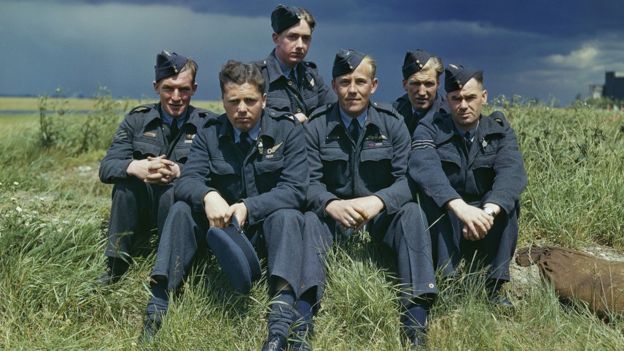 |
||
|
George “Johnny” Johnson, far left, part of 617 Sqn.
|
||
|
Codenamed Operation Chastise, the raid was immortalised in the 1955 film “The Dam Busters”. You can see video of the 2013 flypast below. Go full screen and turn your speakers up to hear those big Merlins. |
||
|
|
||
|
|
||
|
|
||
|
The flying Boat and Brisbane.
Before the Second World War, Pinkenba was the location of the "Department of Civil Aviation's" Flying Boat Base which was relocated to the Hamilton reach in 1940!
It is now many years since flying boats operated on the Brisbane River and more than seven decades since the Redland Bay flying boat base closed down. The nature of air travel has changed markedly and few remember flying boats on the Brisbane River. Brisbane’s waterfront has changed so much that it has obliterated all trace of flying boat activity. The Domain where flying boats moored between the wars has been built out by the QUT and the Riverside Expressway. The flying boat terminals at Pinkenba and Hamilton have disappeared and have been covered by wharf development.
At Colmslie and Redland Bay, memories of flying boats may still be stirred. The site of the wartime American base later used by Barrier Reef Airways has become the Colmslie Reserve parkland. home of the Queensland State Hockey Centre (right). The current boat ramp is built on top of the base’s beaching ramp, once used to bring large flying boats ashore. Shore facilities at Redland Bay were minimal and have since disappeared, but gazing out over the quiet expanse of water with its protective area of islands, the qualities that made the bay ideal for flying boats, can still be appreciated.
Memorials to remind us of these flying boats are few. A cairn at Brett’s Wharf recalls the wartime arrival by RAAF flying boat at Hamilton of the first contingent of American airmen, and a plaque at Redland Bay hotel commemorates that institution’s flying boat associations,
The big flying boats have now receded into Brisbane’s past, but in the few decades their wings graced the river, they wrote a colourful chapter in the city’s history.
For those interested, there is an excellent book titled “Wings on the river” written by David Jones, which discusses Flying Boat operation on the Brisbane River and Redland Bay.
|
||
|
|
||
|
1938: "Qantas Empire Airways" Short S.23 Empire Class Flying Boat VH-ABE ("Coorong") on long finals at Lytton, just before alighting on the Pinkenba reach of the Brisbane River! In the background is the Catholic edifice, "Nazareth House" at Wynnum North that was constructed between 1922-1939.
|
||
|
Why Ethel changed motels
Ethel checked into a Motel on her 60th Birthday, she was lonely, a little depressed at her advancing age so decided to risk an adventure. She thought, "I'll call one of those men you see advertised in phone books for escorts and sensual massages."
She looked through the phone book, found a full page ad for a guy calling himself Tender Tony a very handsome man with assorted physical skills flexing in the photo. He had all the right muscles in all the right places, thick wavy hair, long powerful legs, dazzling smile, six pack abs and she felt quite certain she could bounce a dollar coin off his well-oiled buns .......She figured, what the heck, nobody will ever know. I'll give him a call.
"Good evening, ma'am, how may I help you?
Oh my, he sounded sooo sexy. Afraid she would lose her nerve if she hesitated, so she rushed right in, "I hear you give a great massage. I'd like you to come to my motel room and give me one. No, wait, I should be straight with you. I'm in town all alone and what I really want is sex. I want it hot, and I want it now. Bring implements, toys, everything you've got in your bag of tricks. We'll go at it all night - tie me up, cover me in chocolate syrup and whipped cream, anything and everything, I'm ready! Now how does that sound?”
He said, "That sounds absolutely fantastic ma’am, but firstly you need to press 9 if you want an outside line."
|
||
|
|
||
|
|
||
|
|
||
|
|
||
|
Back Go to page: 1 2 3 4 5 6 7 8 9 10 11 12 13 14 15 16 17 18 19 20 Forward |
||
|
|

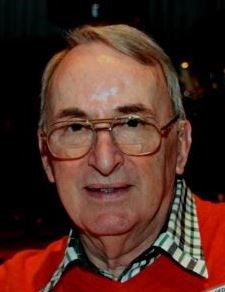
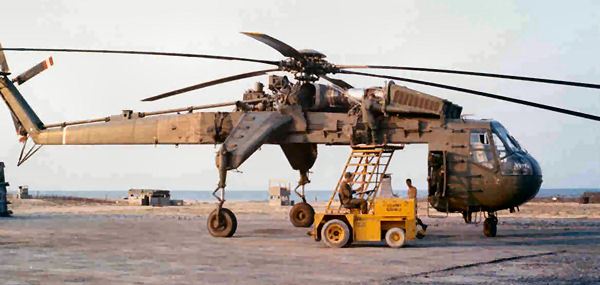 The city of Pleiku was the traditional capital of the Montagnard people.
Situated on a windy plain nearly 2,500 feet above sea level in the heart
of the mountainous north-west, it was only 35 miles from the Cambodian
border, making it a handy command and supply centre for search and
destroy operations
in the area. Its location also rendered it vulnerable to attack from the
west. There were two main bases in the Pleiku area. One, called Pleiku
Holloway, was an Army base and the centre of intensive helicopter
operations. Large choppers, such as Chinooks and Flying Cranes, were
based here, along with hundreds of ‘Hueys’, the workhorses of the search
and destroy mission. It was a good place for fixed-wing aircraft to
avoid although not easy, since the other airfield, Pleiku City, was only
two miles away, and the circuit areas overlapped.
The city of Pleiku was the traditional capital of the Montagnard people.
Situated on a windy plain nearly 2,500 feet above sea level in the heart
of the mountainous north-west, it was only 35 miles from the Cambodian
border, making it a handy command and supply centre for search and
destroy operations
in the area. Its location also rendered it vulnerable to attack from the
west. There were two main bases in the Pleiku area. One, called Pleiku
Holloway, was an Army base and the centre of intensive helicopter
operations. Large choppers, such as Chinooks and Flying Cranes, were
based here, along with hundreds of ‘Hueys’, the workhorses of the search
and destroy mission. It was a good place for fixed-wing aircraft to
avoid although not easy, since the other airfield, Pleiku City, was only
two miles away, and the circuit areas overlapped. 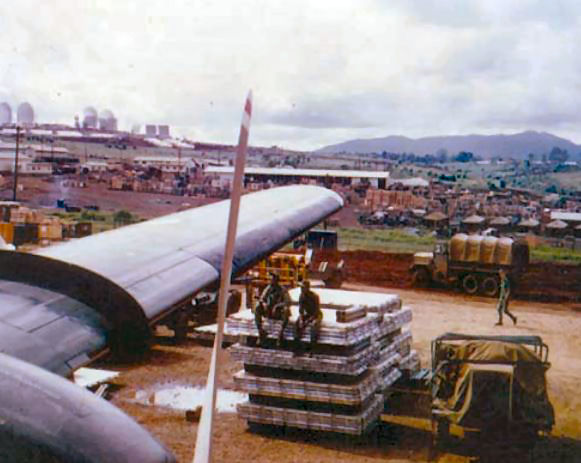
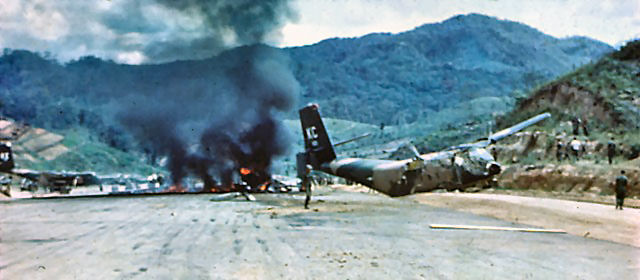
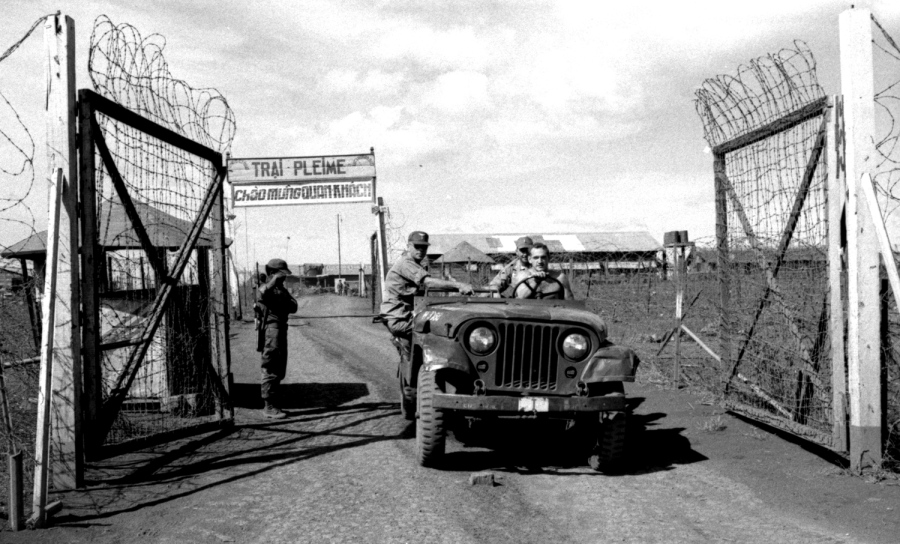
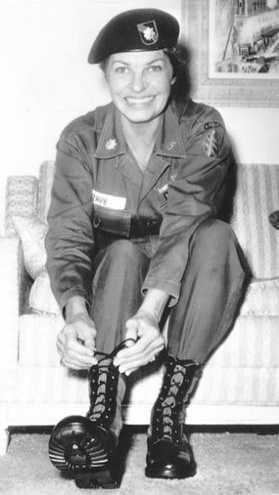 turned
out to be Martha Raye (left), one of many US entertainers on private or
sponsored visits to Vietnam. Our large host shouted for quiet, announced
pride in his Irish extraction and his desire to hear Martha sing ‘Danny
Boy’. As Martha moved forward, a commotion broke out next to us. Our
friend from Plei Me, no longer quiet, was brawling with a fellow
sergeant. Paddy, furious at this sacrilegious interruption, marched over
to the offenders, picked each up in turn by collar and trousers, and
threw them bodily through the inward opening flywire door, which
commenced to flap ineffectually in either direction. Having established
order in this way, his expression transformed into gentle rapture as
Miss Raye put her heart and soul into the Irish ballad. Next it was time
for the hired entertainment. The belly dancer swept in, veils floating,
bangles jangling. Conscious of the act she was following, she put
everything into her performance, and soon held a captive audience. She
noticed Dave, almost falling off his barstool with each flutter of a
veil. To his embarrassment, she took his hand and pulled him into the
centre of the floor. The mock seduction that followed had everybody,
Dave included, laughing until they were sore. Dave ended up on the floor
with the well-endowed dancer gyrating over him until he disappeared
under her skirts. He still will not tell me the colour of her underwear,
or even if she had any. Now the dancer tried to steal some of Martha’s
thunder by bringing her into the act. But Martha upstaged her. Skinny as
a beanpole, she brought the house down with an exaggerated parody of the
voluptuous dancer’s routine, following her wildly gyrating hip movements
and come-hither facial expressions.
turned
out to be Martha Raye (left), one of many US entertainers on private or
sponsored visits to Vietnam. Our large host shouted for quiet, announced
pride in his Irish extraction and his desire to hear Martha sing ‘Danny
Boy’. As Martha moved forward, a commotion broke out next to us. Our
friend from Plei Me, no longer quiet, was brawling with a fellow
sergeant. Paddy, furious at this sacrilegious interruption, marched over
to the offenders, picked each up in turn by collar and trousers, and
threw them bodily through the inward opening flywire door, which
commenced to flap ineffectually in either direction. Having established
order in this way, his expression transformed into gentle rapture as
Miss Raye put her heart and soul into the Irish ballad. Next it was time
for the hired entertainment. The belly dancer swept in, veils floating,
bangles jangling. Conscious of the act she was following, she put
everything into her performance, and soon held a captive audience. She
noticed Dave, almost falling off his barstool with each flutter of a
veil. To his embarrassment, she took his hand and pulled him into the
centre of the floor. The mock seduction that followed had everybody,
Dave included, laughing until they were sore. Dave ended up on the floor
with the well-endowed dancer gyrating over him until he disappeared
under her skirts. He still will not tell me the colour of her underwear,
or even if she had any. Now the dancer tried to steal some of Martha’s
thunder by bringing her into the act. But Martha upstaged her. Skinny as
a beanpole, she brought the house down with an exaggerated parody of the
voluptuous dancer’s routine, following her wildly gyrating hip movements
and come-hither facial expressions. 